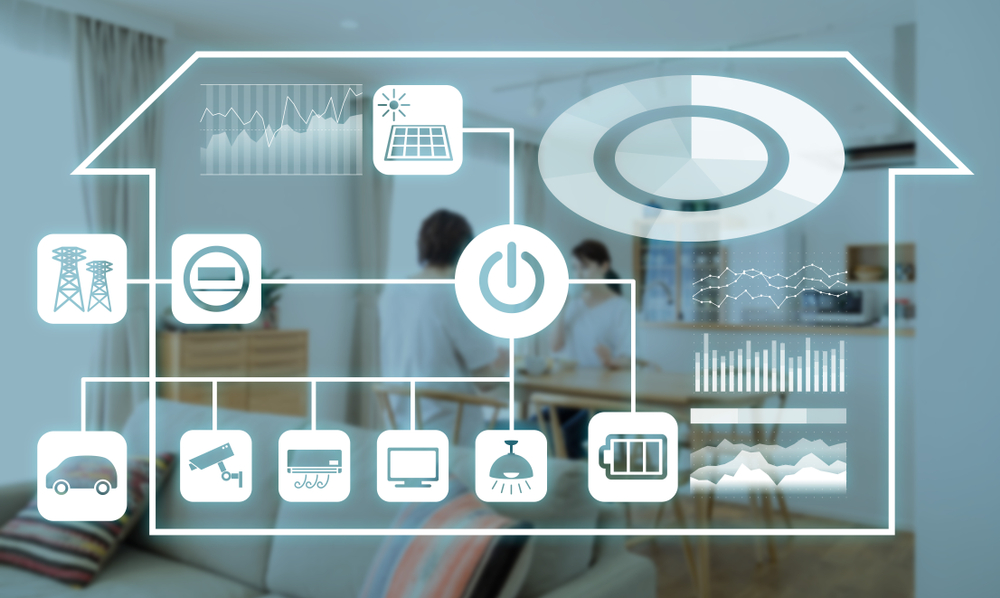Technology in solar energy international and local trading

As solar energy’s popularity is skyrocketing in residential, commercial, and industrial use, it has become one of the emerging drivers of the renewable energy transition. Now more than ever, generated power surplus starts being treated as a commodity instead of a resource and can be liquidated on a big scale, using solar energy international and local trading tools.
Solar energy surplus grows bigger year-to-year, regardless of a certain slow down in Chinese generation, the largest photovoltaic market in the global perspective. According to the International Energy Agency, 2019 was a record year for PV capacity. Solar PV noted 22% growth (+131 TWh) and gained second place in total generation growth, right after wind power. As the IEA predicts, global solar PV will probably reach a 15% annual growth level between 2019 and 2030.
Biggest players in solar energy international and local production
Although the competition is fierce and tends to swing slightly every year, the leader stays unchanged for the past several years. The map below shows countries joining the global rivalry, investing increasingly bigger money in solar PV technology.
The 2019 solar energy generation top 5 includes:
China
The Asian Tiger’s appetite for electric power is never satiated, although it comes with a price. China stands as a leader in leaving the biggest carbon footprint among all countries. To compensate for that, the country has been producing the largest volumes of PV power of all PV-active countries since 2015. In 2019 it reached the level of 223,8 terawatt-hours. It doesn’t seem very surprising in view of the fact that China built four out of ten largest solar plants in the world. As the country accounts for over 30% of global solar production, it is also the biggest producer and buyer of PV panels, with an installed base of 175GW in 2018.
USA
Also, since 2015, the USA stands as the second greatest potential in solar energy generation. In 2019, the country produced 108,36 terawatt-hours, which is almost a 15% increase in year-to-year growth. The USA has the ninth and tenth biggest solar plants on the global scale, but it’s not exclusively the industrial scale that implicates the second-highest capacity. The fastest-growing segment in the US market is residential PV, stimulated and encouraged by the American government to participate in the solar energy international trading based on local generation.
Japan
Japanese switch towards solar energy was triggered by the 2011 disaster at the nuclear plant in Fukushima and accelerated in the following years. Within only four years, Japan increased solar PV generation over six times, compared to the state from 2011. In 2019 the Japanese solar power production reached 75,27 terawatt-hours. As an insular country, Japan faces constant challenges of accessible space, also in terms of industrial infrastructure, like plants. The country used abandoned golf courses and transformed them into solar plants to reuse unexploited areas. Japanese coastal side is also used for solar power generation. Floating’ solar islands’ made with water-resistant solar panels are gaining popularity.
Germany
Germany stands as an incontestable leader in solar PV production in Europe, generating 30% of European solar power (47,52 terawatt-hours in 2019). Even though the country isn’t the sunniest one in Europe, Germany betted on solar power at the very beginning of the XXI century as one of the renewable resources in the country’s energy mix. Europe’s leader has been ambitiously fighting climate changes and aims to switch on 100% renewable energy by 2050, encouraging other EU countries to follow its steps.
India
As for a country with almost 300 sunny days, India has started big-scale solar energy generation quite late, in 2010. Intense development and investments brought India to the top 5 in solar energy generation in 2018. By the end of 2022, the Indian government wants to more than double the total amount of solar energy generation and achieve 100GW of solar power production by promoting residential usage of solar panels that will support industrial infrastructure ( India also has two out of ten biggest solar plants in the world).
Top digital technologies used in solar energy international and local exchange
All the generated solar energy capacity, which additionally increases its level every year, unlocks new opportunities regarding solar energy international and local trading and exchange. Countries with high levels of insolation have the potential to make it the major renewable source of energy, covering not only their own demand but also trading solar energy with other countries that can’t use solar PV on a similar scale. With support from cutting-edge technology, solar energy may become a relatively cheap and efficient energy source adjusted to international trading.
There are three major areas, indicated by the International Renewable Energy Agency, that digital technologies are reshaping, and by that, they’re transforming the global energy system:
- Immense collection and analysis of data – processing huge amounts of data is absolutely essential for efficiency improvement, which in terms of energy, is an ultimate goal. Big Data techniques are proven to be helpful with accelerating data processing and complex analysis to maximize the value of energy generation and usage.
- Improved controllability – remote and highly automated control over assets enables extending their usability; for instance, apart from covering own demands, it enables international trading.
- Enhanced flexibility – renewable energy needs flexibility in load processing to address its intermittency provided by IoT and cloud solutions.
A combination of those three aspects enables the development of so-called smart grids, electrical grids that use smart measurement, smart devices, and renewable energy resources. Smart grids conjoin flexible resource management, introducing significant amounts of clean energy to energy systems both local and global, as well as ensure scalability for future advancements without compromising the existing infrastructure. It is possible due to the use of highly efficient technologies such as artificial intelligence, the Internet of Things (IoT), Big Data, or one of the newest technologies – blockchain. Such technology scope enables efficient solar energy international exchange.

Internet of Things (IoT)
IoT offers the energy sector a wide usability range in areas such as energy generation and supply, transmission and distribution, as well as overall energy demand management. It combines smart metering devices, management applications, smart devices, data storage, analytics, and processing protocols into interconnected systems capable of transmitting solar energy surplus with the benefit for suppliers and buyers.
But above all, the IoT solutions unlock quick communication between the entities, e.g., supplier-buyer path, and enable a swift exchange of commodities, like PV-generated energy in solar energy international trading. By collecting and analyzing large volumes of data coming from multiple conjoined devices, IoT can help to improve fast computations delivered in real-time. It also enhances and optimizes the decision-making processes during the energy exchange. For instance, IoT platforms are able to forecast energy generation and potential demand volume to support swift and continuous solar energy trading on a local and global scale.

Blockchain
Blockchain is a fairly new technology used in the energy & utilities industry. Nevertheless, it has occurred a groundbreaking technique for transaction systems used in virtual energy trading. Long story short, blockchain is a distributed ledger technology that records and reduces transaction costs. It is also responsible for enabling actual solar energy international and local energy trading by:
- boosting direct trading and eliminating the need for a ‘middleman’ like a retailer to process transactions,
- introducing lower-cost operational models,
- ensuring system scalability and flexibility – as a point of touch for decentralized solar energy providers, grids, and energy buyers,
- providing a high level of cybersecurity and trust – certified and trustable products with a well-documented energy footprint.
So how does it work exactly? Blockchain links all transactions in chronological order using cryptography. This way, the whole ‘chain’ of interconnected ‘blocks’ is secure and resilient and provides tamper-proof records. Systems based on blockchain are also very transparent – each transaction can be identified on public records and verified by every network user. It means that literally every kWh can be checked for its source. This security and reliability of blockchain makes it a nearly perfect technology for a system that connects thousands of decentralized power sources and enables energy trading between prosumers and consumers within a smart grid. Blockchain’s decentralized character fosters its security precisely because it is distributed, scattered instead of being held in one place, like a single data center. Such a level of reliability builds digital trust and constitutes an alternative for the traditional forms of energy exchange management.
Another game-changing fact that speaks for blockchain technology is its impact on communication between multiple HVAC devices and grid operators. A combination of interconnected smart grid and blockchain technology creates an open peer-to-peer marketplace, within which clean energy is easily available, transactions are secured, and energy trading doesn’t require any middlemen like retailers. It’s cost-effective for both prosumers, consumers, and the grid itself due to the fact that the whole decentralized system acts as a huge back power source. And maybe as a future global energy supply.

AI & Big Data
AI is a perfect match for Big Data technology that helps in taming smart metering data collection and processing, the very foundation of modern, data-driven energy systems. Whilst Big Data is responsible for the storage, collection, and processing of huge volumes of data, artificial intelligence uses collected data for detailed and accurate energy generation forecasting, efficient management of distributed resources, precise monitoring, and better management of energy generation and consumption.
A combination of those two technologies has a positive impact on overall efficiency and stability increase within solar energy international and local trading systems. Its ability to analyze massive datasets in a short time ensures delivering real-time capacity and demand and enables running accurate predictions for any changes within energy systems.
It also serves as a strong support technology for the development and advancements of smart grids, which act as hubs for multiple energy sources.
Solar energy international and local exchange solutions
Energy trading solutions are an emerging area of the energy and utilities market, but there’s already quite a lot of companies offering various peer-to-peer platforms, energy-blockchain applications, or operating systems for energy markets. Almost all of them are focused around solar energy international and local treading, sometimes with additional energy storage solutions or other renewable energy sources like residential wind or hydropower.
One of the latest is Siemens’s Pebbles – an electricity trading platform for the local Bavarian market based on blockchain technology. Pebbles serves as a local energy marketplace that manages transactions between entities within the market. Apart from energy trading, one of the goals of Siemens was to create a platform that provides end-to-end transparency and trust between users.
Another local energy trading application is Pando, a platform designed by LO3 from Portland, US. Pando serves as a blockchain energy marketplace for utilities that enables trading energy or energy attributes like renewable energy credits.
Even though such applications work mostly on a local scale, there are already some platforms that offer solar energy trading globally.
Power Ledger is an example of such a solution. It’s an Australian blockchain software platform dedicated to trading renewable energy and environmental commodities. Power Ledger enables solar energy international trading, and the platform starts initiatives in the US, Thailand, Japan.
Also, Solar Generation from the US has designed SolGen, a smart energy market platform for energy trading and management. The main idea of this solution is to trade solar energy between places with high insolation levels (like California) and countries that have available lesser amounts of solar energy (like Nordic countries in the EU).
Solar energy international and local trading will skyrocket
Considering the increasing popularity of solar energy in residential, commercial, and industrial installations, the global energy market may expect the energy trade to skyrocket its recognition alongside. The development of cutting-edge technologies and new emerging ones will accelerate this process, making solar energy international and local trading more accessible, efficient, and, perhaps, even cheaper.
contact us
Need expert guidance on your next energy project?
Reach out to us and discover how Codibly can offer tailored solutions to drive your business.